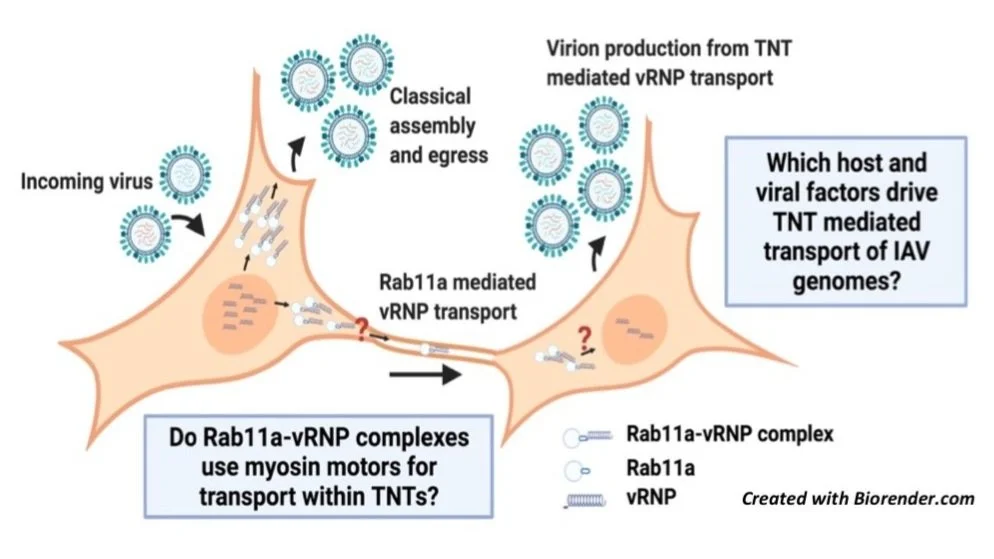Identify mechanisms of tunneling nanotube mediated cell-cell spread of influenza viruses
Viral spread within an infected host is a complex process. Classical spread involves the production of viral particles that need to disseminate from their source to other sometimes distant locations to initiate a new infection. Many barriers can obstruct this spread including neutralizing antibodies, antiviral therapeutics, mucus and other extracellular host defences. However, several viruses have evolved to utilize particle-independent mechanisms for transport of their genomes and/or other viral components. One such mechanism exploits tunneling nanotubes (TNTs). Our research will aim to advance mechanistic understanding of direct cell-cell spread through super-resolution imaging, genetic, biochemical and quantitative proteomic approaches. Since the major source of influenza pandemic strains is host switching of avian viruses to mammals, we are interested in the differences and/or similarities between human and avian IAVs in utilizing TNTs for spread.
Impact of prior immunity on reassortment and transmission of influenza viruses
Novel influenza viruses can be introduced into the human populace from wild bird and poultry reservoirs, which can lead to the emergence of pandemic strains through reassortment with circulating human viruses. Reassortant viruses which bear genes from human adapted viruses are likely to be more fit in humans than strains that carry fully avian-adapted genomes. Importantly, however, the avian-derived genes can confer antigenic novelty. This combination of features can enable the spread of reassortant viruses through the human population despite widespread pre-existing immunity to seasonal influenza viruses. Our research will aim to understand the impact of pre-existing immunity, induced through prior infection or vaccination, on within host reassortment of influenza viruses and subsequent onward transmission. We are particularly interested in the interplay between avian influenza viruses and a mammalian host system and dissecting the role of heterologous immunity in shaping viral transmission. Our research program will be directed towards further understanding how cellular co-infection frequencies, reassortment rates and transmission of avian viruses vary depending on the interplay between a) host species (avian/mammalian), b) virus strains (seasonal/highly pathogenic), c) immunological profiles (naïve/immune) and d) anatomical compartments (upper/lower respiratory tracts).


